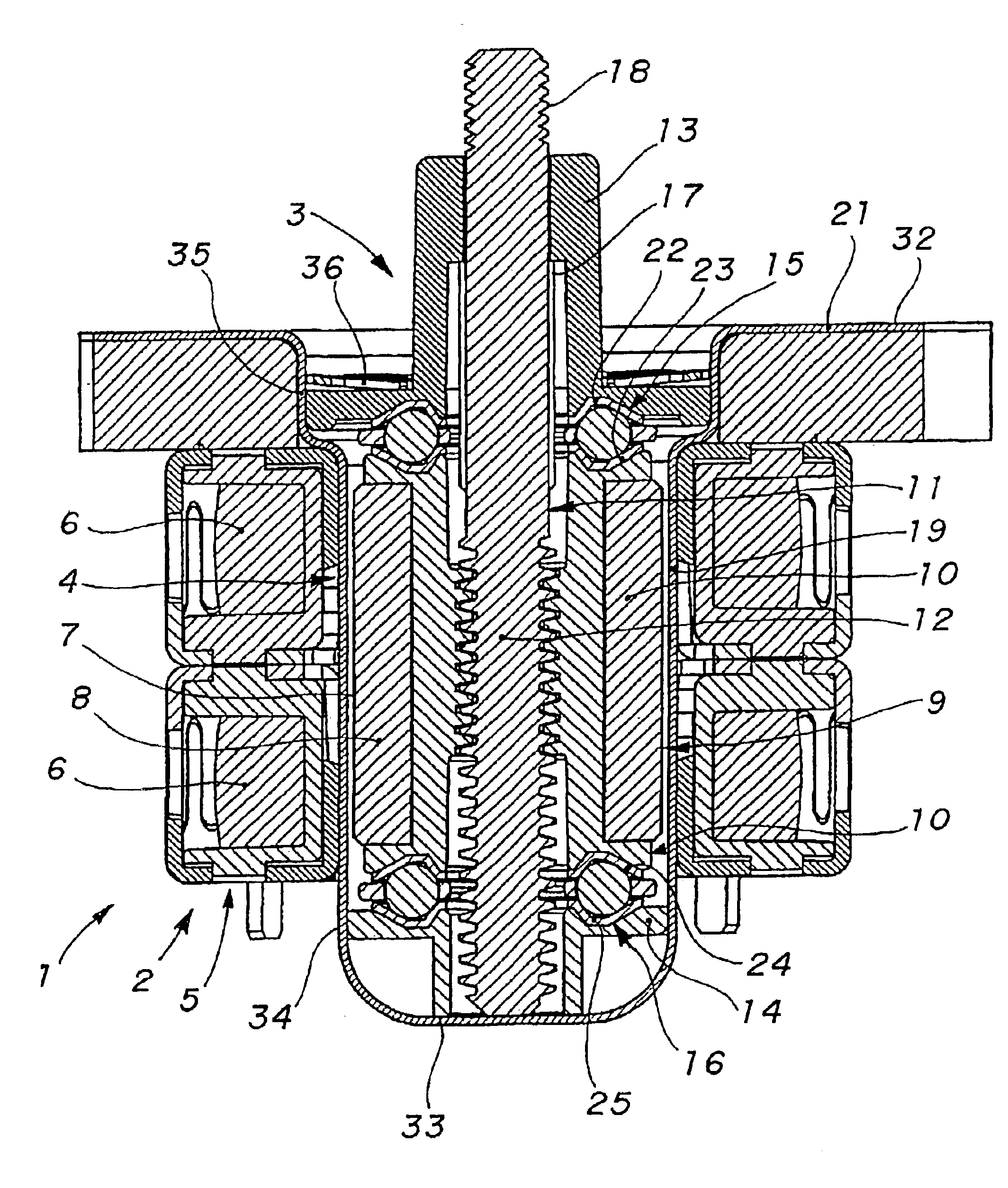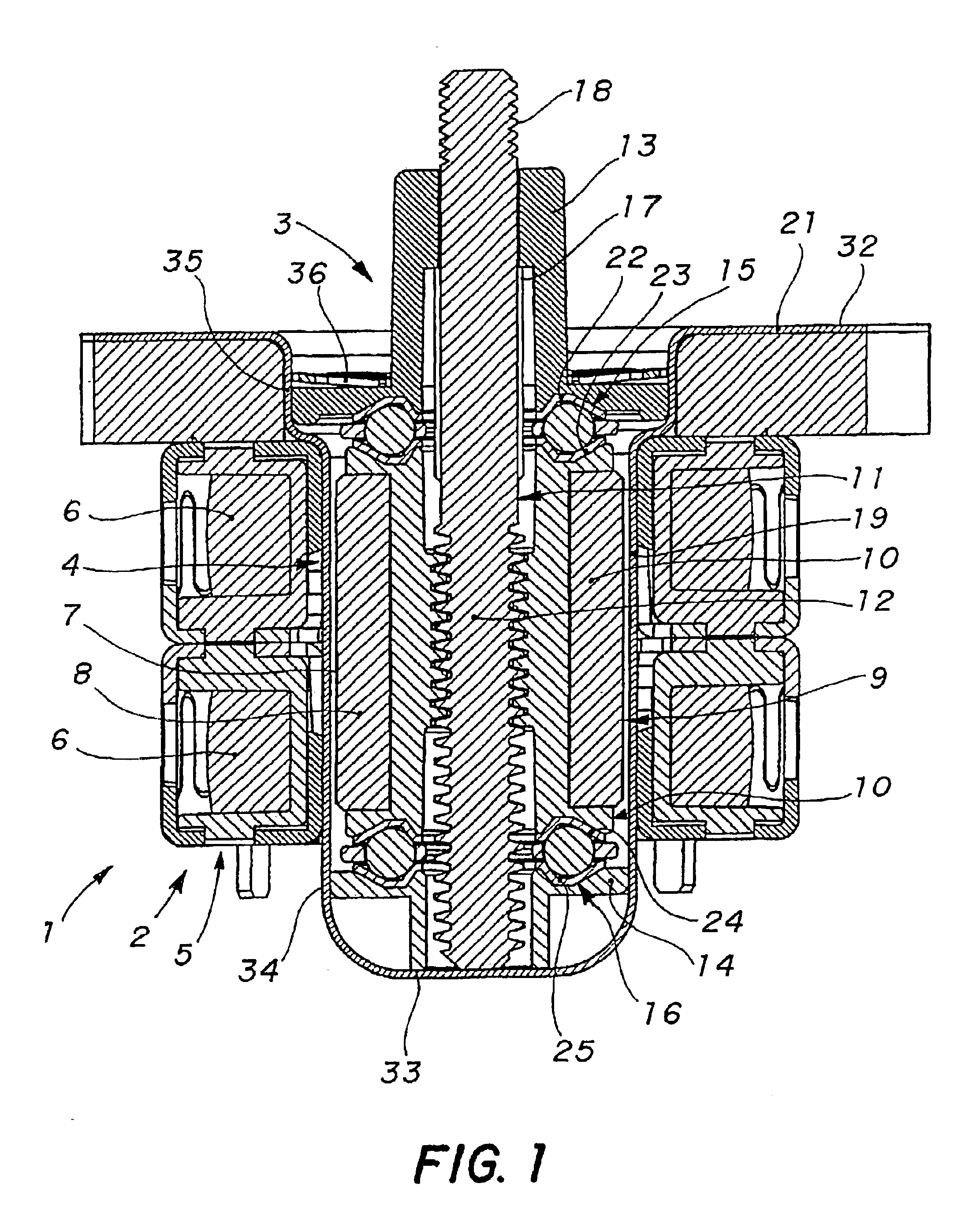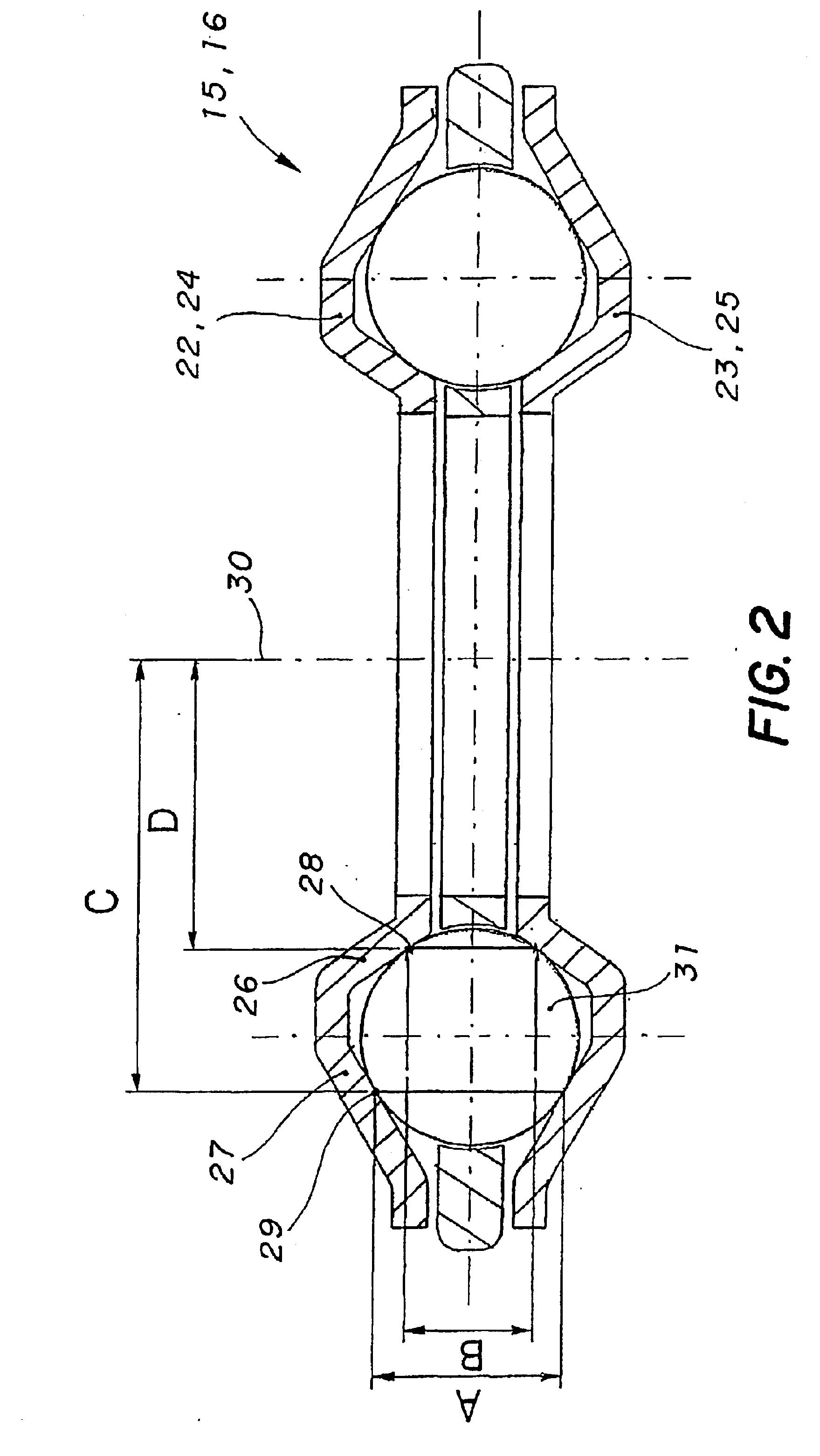Linear or rotary actuator
a technology of actuators and rotors, applied in the direction of bearings, shafts, dynamo-electric machines, etc., can solve the problems of unstable axial bearings, poor performance, and inability to use, and achieve the effects of not very expensive, reliable and efficien
- Summary
- Abstract
- Description
- Claims
- Application Information
AI Technical Summary
Benefits of technology
Problems solved by technology
Method used
Image
Examples
Embodiment Construction
Referring now to FIG. 1, an actuator 1 comprises an electric motor part 2, an actuating part 3 and a partition wall 4. The electric motor part 2 in these examples comprises a step motor having aspects similar to those of conventional step motors, such as the stator 5 with two portions 6 with coils separated by an air gap 7 of permanent magnets 8 mounted on a rotary member 9 of the actuating part 3. The use of a step motor is advantageous inasmuch as it allows an easy, rapid setting of the position of the member to be controlled in a compact, not very expensive design. Nevertheless, other types of reversible motors may be used in the present invention.
The actuating part 3 comprises the rotary member 9 provided with a threaded portion 10 engaging with a matching member in the form of a screw 11 having a threaded portion 12, a cover part 13, a housing part 14 and bearings 15, 16 supporting the rotary member 9 when rotating.
In the embodiment illustrated, rotation of the rotary member 9 ...
PUM
 Login to View More
Login to View More Abstract
Description
Claims
Application Information
 Login to View More
Login to View More - R&D
- Intellectual Property
- Life Sciences
- Materials
- Tech Scout
- Unparalleled Data Quality
- Higher Quality Content
- 60% Fewer Hallucinations
Browse by: Latest US Patents, China's latest patents, Technical Efficacy Thesaurus, Application Domain, Technology Topic, Popular Technical Reports.
© 2025 PatSnap. All rights reserved.Legal|Privacy policy|Modern Slavery Act Transparency Statement|Sitemap|About US| Contact US: help@patsnap.com



